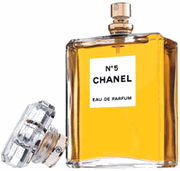The latest issue of Genetic Resources and Crop Evolution (GRACE to the cognoscenti) has no less that three papers which use DNA markers to say interesting things about the agricultural biodiversity of Italy, my country of birth and (coincidentally) current abode. I want to talk briefly about two of these today — focusing on opposite ends of the peninsula — because they’re kind of unusual among molecular diversity studies in actually trying to answer a question, rather than just fingerprinting a load of stuff for the sheer thrill of it. In other words, they’re a little bit more than stamp-collecting. No offence to the philatelists among us.
In the first paper, Italian and American researchers wanted to know whether the “Sorrento” walnut variety is really always the “Sorrento” walnut variety. Sorrento is a beautiful little seaside town south of Naples, in the south of Italy. We used to go near there on our summer holidays when I was small. Walnuts are everywhere once you get up into the surrounding hills, and the local variety — or, better said, population or landrace, as it shows a lot of morphological variation — is one of the most famous in Italy. It is now widely planted, and the researchers compared two sets of trees, all commercially labelled as “Sorrento,” from areas 50 km apart: one around Sorrento itself, and one further north near Caserta.
It turned out that, although they looked roughly similar and were called the same thing, the walnuts from these two areas were genetically distinct. It seems that the farmers of the Sorrento region have carried out strong selection for particular yield and quality traits, but the original ancient stock still survives in Caserta. And some walnuts sold as “Sorrento” are probably nothing of the kind at all.
In the second study, conducted way up in the north, an Italo-Swiss team asked itself: what modern wine grape varieties are the descendants of Pliny’s famous “Raetica”? Caius Plinius Secundus (23-79 AD), better known as Pliny the Elder, says in his Naturalis Historiae that before Tiberius experimented with African wines, “Rhaetian” was considered one of the best tipples in the Empire. Rhaetia “comprised the districts occupied in modern times by eastern and central Switzerland (containing the Upper Rhine and Lake Constance), southern Bavaria and the upper Danube, Vorarlberg, the greater part of Tirol, and part of Lombardy.”
The researchers started with the observation that a Swiss cultivar known as “Reze” is very close to “Raetica” etymologically and comes from the right geographical area. They then searched molecular databases for its closest relatives, and came up with four varieties from Switzerland and northern Italy, again all from roughly the right place. Sorting out the possible relationships gets complicated, but it is unlikely that any of these are parental to “Reze”, and much more likely that they are siblings or offspring. Incidentally, one of these varieties — “Arvine Grande” — is no longer grown and is only available in genebanks.
So actually we are not much closer to answering the original question, because we can’t be sure about the “Raetica”/”Reze” connection. But, as they say, the journey is the destination. And for their next step on this journey back in time, the authors are now trying to extract DNA from ancient pips.
 One of the pillars of my belief has long been Chanel 5 perfume.
One of the pillars of my belief has long been Chanel 5 perfume.